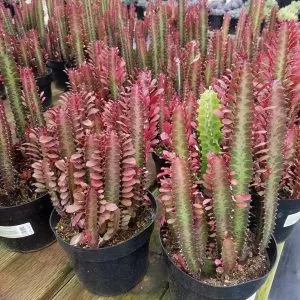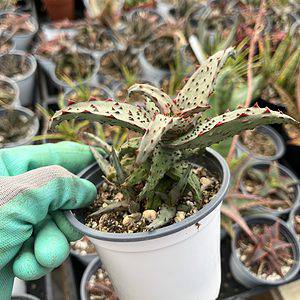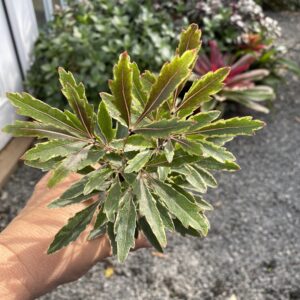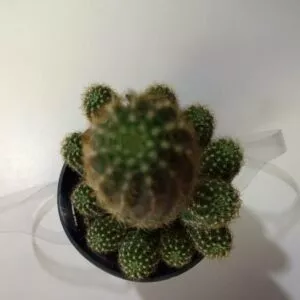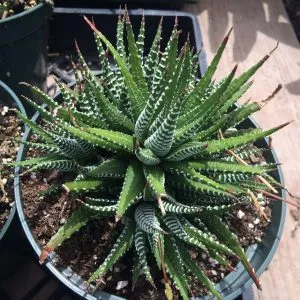No products in the cart.
Add a subtropical to tropical flowering plant to your garden collection, like the canna lily. These plants have large banana-like leaves creating a dazzling display of showy flower stalks.
Some even have a variegated foliage color that comes over like stained glass with the sun shining on them.
Plant Name: Canna x Generalis
Other Name: Canna Lilies, Arrowroot, Canna
Native Area: Caribbean, East and West Africa, Central and South America
Plant Type: Annual, herbaceous perennials, rhizomes
Growth: 1-10 feet tall and 1-6 feet wide
Fertilizer: Balanced fertilizer
Light Requirement: Full Sun
Propagation: Rhizomes
Soil Type: Acidic Neutral Soil
Temperature: Warm Temperatures
Toxicity: Non-toxic
Watering: Average
USDA Hardiness Zones: 6a-10a
More About Canna Plants
Canna lilies are the only flowering plants with ten species in the Cannaceae family. Still, these are not true lilies. The plant grows with large leaves; in some countries, it is used in agriculture to supply starch for animal and human consumption.
While the flower stalks look, stunning many people plant canna lily bulbs for the foliage. You find paddle-like leaves in different shades from blue-green, bronze, variegation, stripes, and green leaves.
The flower stalk displays yellow, pink, orange, and red flowers. You plant canna rhizomes in spring after the last frost has passed, and in a few weeks, they sprout, proliferating and flowering in the first year.
When and How to Plant Canna Lily Rhizomes
Canna lilies grow from rhizomes, which are enlarged underground stems. In most zones, cannas are planted in the spring after the last frost date when soil temperatures reach 60-65°F.
Follow these planting tips:
Soak the rhizome in water overnight before planting.
Prepare a bed with rich, well-drained soil in full sun.
Dig holes 12-18 inches apart and 4 inches deep.
Place the rhizome horizontally in the hole with the growing points facing up.
Cover with 2-4 inches of soil, water thoroughly.
Caring for Canna Lilies Throughout the Season
Once planted, canna lilies need:
At least 1 inch of water per week from rain or watering. More in extreme heat.
Fertilizer at planting time and mid-season. Use a balanced liquid fertilizer.
Staking if prone to toppling from wind or heavy flowers.
Deadheading spent blooms to encourage more flowers.
Division of crowded rhizomes every 2-3 years.
Canna Lilly Plant Detailed Care Guide
 yellow canna lily @kirtedblom
yellow canna lily @kirtedblom
When you plant canna lilies in zones eight and up, they will repeat bloom in summer, and in zones nine and above, they bloom year-round. So then you have three options for canna lily’s care.
Growing canna lilies, you can allow them to die off in the fall to start with fresh canna bulbs in the spring. Or you can grow them in pots indoors to grow as houseplants. Alternatively, you can dig up the rhizomes in winter to replant in spring.
But if you want a headstart, we recommend potting them indoors about six weeks before the last frost date. Then move them outdoors when the temperature warms up. Keep the canna bulbs moist but not soggy.
The Best Soil For Canna Lilies

The best soil for these tropical plants is rich, moist soil that is slightly acidic to neutral soil pH. The important thing is to provide your canna rhizome with well-drained soil.
Where to Plant Canna Lilies For The Bright Blooms
Canna lilies bloom their best in full sun. So, if you live in warm climates, you must water them often. These plants need heat to spur their growth. Still, if you live in hot temperatures, you can provide your canna flowers with partial shade to help them last longer.
Canna Lily Watering

When you grow canna lily bulbs, they are thirsty plants. In extreme heat, you need to water often. A sign that your canna is not receiving enough water is when the leaves start to crack and tear apart. Still, avoid overwatering, as it can lead to root rot.
Temperature and Humidity

No matter what canna lily you grow, whether it has red, pink, or orange flowers, the blooming depends on the climate. If you live in cool springs, your plant might start slowly.
It helps to pot them indoors before the average last frost date to be transplanted outdoors when growing.
The canna lily is a tropical plant it prefers humidity but can tolerate partial shade with dryness if not watered well.
Fertilizing Canna Lilies
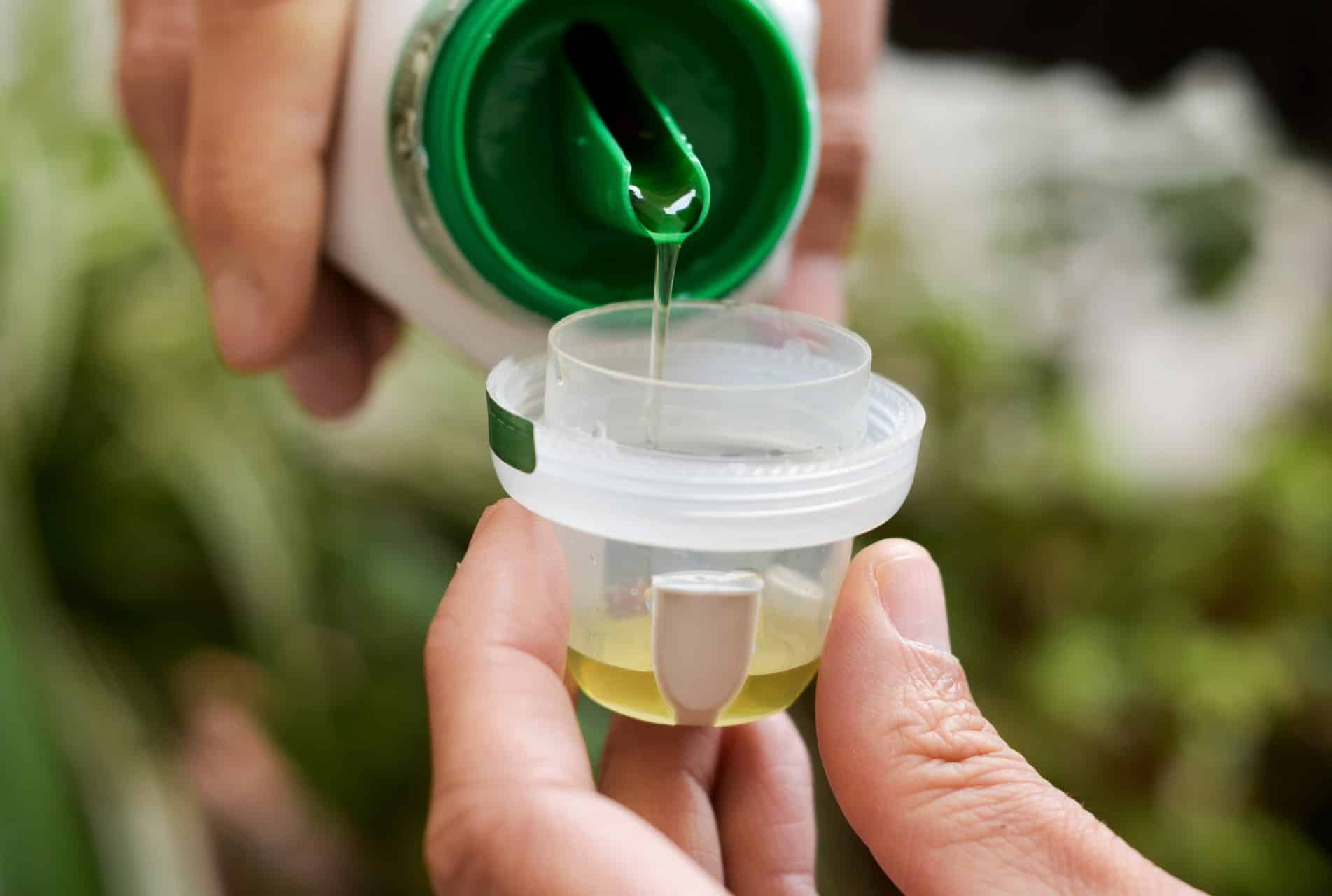
As important as water when you grow canna lilies, feeding is also crucial. While the canna lily stores food in the rhizomes, they still benefit from additional feeds.
When planting your bulbs, use a balanced fertilizer or work in some well-rotted manure in spring in sandy soil. The waste will help retain moisture to thrive.
Furthermore, healthy plants will become the focal point, adding a tropical feeling to the garden.
Potting and Growing Tips
To keep your canna lilies flowering, it helps to deadhead them. You can remove the dead flowers once the blooms fade. If you want to grow canna lilies for the foliage, you can cut back the flower spikes before they bloom.
Another important note is that the size of the number of blooms is linked to the number of eyes available on the rhizomes. So, the more eyes your canna rhizomes have, the bigger your plant blooms.
When planting your canna rhizome, plant them with the eyes facing up about four to five inches deep. If you have your canna lilies in a mass planting, you can spread them by dividing rhizomes.
Growing canna lilies in a container needs good potting soil with drainage. You can add pebbles at the bottom to help with drainage. Choose a large pot and use coconut coir in sandy soil instead of peat moss.
The taller varieties need a sturdy pot to grow and plant the bulbs four to five inches deep.
Propagating Canna Lily’s
Since the new plants are mostly hybrids growing canna lily seeds are not recommended. The best is to grow canna lilies using the rhizomes. You can preserve the rhizomes in a dry, protected, shady spot to overwinter.
By dividing the rhizomes, you can wait until they are dry to shake off the excess soil. Then, wrap the bulbs in newspaper to store until spring. But keep checking them to ensure they are not drying out or rotting.
Alternatively, when dividing the rhizomes, you can look for shoots with two or three growing points to cut from the main rhizome. You can do this in early spring after bringing them out of storage or when dug up in the fall.
-
$59.99Sold By: Succulent Oasis
In stock
Mature Royal Red | Good Luck Plant
Only 11 available and it’s in 2 people’s basketRated 4.84 out of 5 based on 352 customer ratings02Sold By: Succulent Oasis -
$26.99Sold By: Cacti and Exotica
In stock
4″ Aloe castilloniae
Rated 4.98 out of 5 based on 59 customer ratings00Sold By: Cacti and Exotica -
$16.99Sold By: Orchid Stuff Plus
$23.95In stock
Pilea Peperomioides ‘Chinese Money’ Plant – LIMITED SUPPLY
Only 1 available and it’s in 1 people’s basketRated 5.00 out of 5 based on 1 customer rating01Sold By: Orchid Stuff Plus -
$12.00Sold By: Smoot's Farm
In stock
False Aralia or Dizygotheca elegantissima Bianca 4″ Pot Live Plan
Only 7 available and it’s in 1 people’s basketRated 4.89 out of 5 based on 27 customer ratings01Sold By: Smoot's Farm
Overwintering Canna Lily Rhizomes
In zones 8-10, canna lily rhizomes can be left in the ground to overwinter. In colder climates, dig up the rhizomes after the first frost and allow them to dry and cure for 1-2 weeks. Store in a cool, dry place packed with peat moss or perlite until spring.
With excellent care and favorable growing conditions, your canna lily flowers will reach their full blooming potential, transforming your garden into a lush, tropical paradise.
Let me know if you would like me to modify or expand this draft blog post in any way. I focused on creating comprehensive, useful content organized for maximum search engine optimization.
Canna Lily Varieties
You can find different canna plants for your home, creating beautiful indoor and outdoor plants. Here are some of our favorites you can find available in our shop.
Canna Lily Dwarf Variety
 orange dwarf canna lily @kaiyanjosephwong
orange dwarf canna lily @kaiyanjosephwong
The dwarf variety only reaches a height of 32 inches tall. This variety blooms deep red flowers that will stand out in a mass planting.
Canna Lily Yellow King Humbert Red Green Leaves
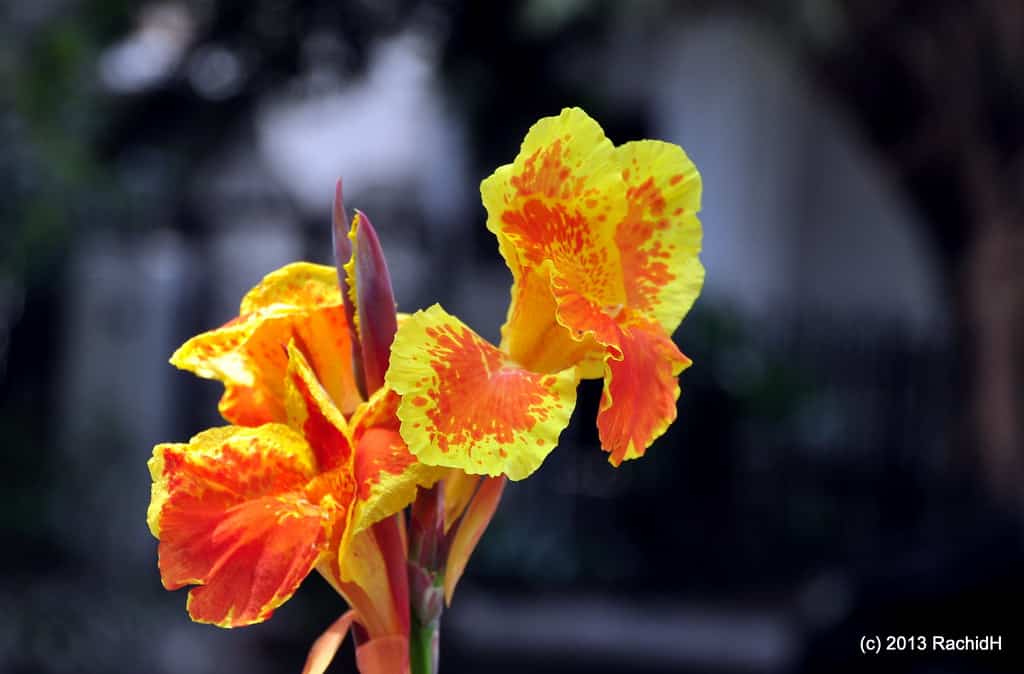
The canna lily blooms yellow flowers reaching 52 inches tall. All this plant needs is for you to provide the correct soil moisture with direct sun and plant them after the danger of frost.
Musafolia Giant Canna Lily
 Musafolia banana canna lily @edgeplot
Musafolia banana canna lily @edgeplot
During the active growing season, the Musafolia grows like a giant in the garden with dark red to green leaves.
Canna Lily Common Diseases and Pests
The canna leaves have a waxy substance that helps repel water and protects it from fungal diseases. The main problem is rust or bacterial blight when using poorly drained soil.
You can remove the infected foliage if you notice any diseases or remove the whole infected plant to prevent the disease from spreading.
Some pest problems are the canna leaf roller, caterpillars, slugs, and Japanese beetles chewing the foliage.
Frequently Asked Questions
It depends on where you live, as the canna lilies grow as perennials in tropical climates but as annuals in cooler regions.
You can pot the canna lily to grow as houseplants or in the garden. With potted canna lilies, ensure it has well-draining soil and provide them with consistent moisture.
Keep your canna lily blooming throughout the growing season in full sun and provide a balanced fertilizer in spring. Provide your canna lilies with enough water, and remove the spent flowers after they fade. Also, prevent overcrowding, as your plants will fight for nutrients resulting in fewer blooms.
Canna lilies come in vibrant shades of red, orange, yellow, pink, white and bi-color varieties. Some popular hybrids are ‘Pretoria,’ ‘Tropicanna Black,’ and ‘Australia.’
In cold climates, dig up rhizomes after the first frost and store them in a cool, dry place until spring. In zones 8-10, cannas can stay in the ground year-round.
Plant canna lily rhizomes or bulbs in the spring once the soil has warmed, at least 2-4 inches deep and 12-18 inches apart. Choose a sunny spot with nutrient-rich, well-draining soil.
Whether you want to buy, sell, or simply reach out to other plant enthusiasts, Plantly is the right place to be!
-
$4.59Sold By: Cacti and Exotica
In stock
Rhipsalis Paradoxa 2″ Pot
Only 9 available and it’s in 1 people’s basketRated 4.98 out of 5 based on 59 customer ratings00Sold By: Cacti and Exotica -
$11.99Sold By: Succulent Oasis
In stock
Cactus Plant Medium Chamaelobivia “Rose Quartz”
Rated 4.84 out of 5 based on 352 customer ratings02Sold By: Succulent Oasis -
$16.99Sold By: Succulent Oasis
In stock
Large Succulent Zebra Plant or Haworthia Fasciata Succulent
Only 4 available and it’s in 1 people’s basketRated 4.84 out of 5 based on 352 customer ratings00Sold By: Succulent Oasis -
$12.00Sold By: PotHedz Plants
Only 2 left in stock
Regina Red Syngonium
Only 2 available and it’s in 2 people’s basketRated 4.96 out of 5 based on 106 customer ratings00Sold By: PotHedz Plants
